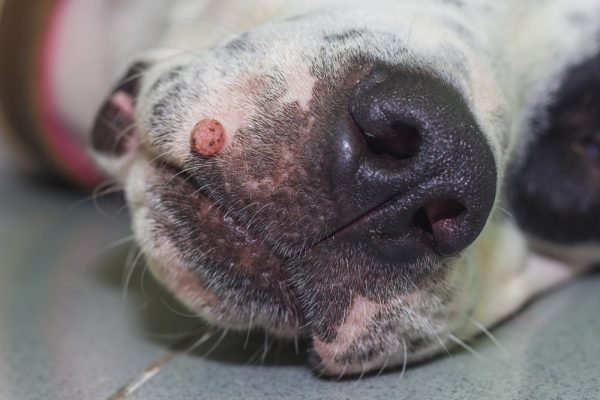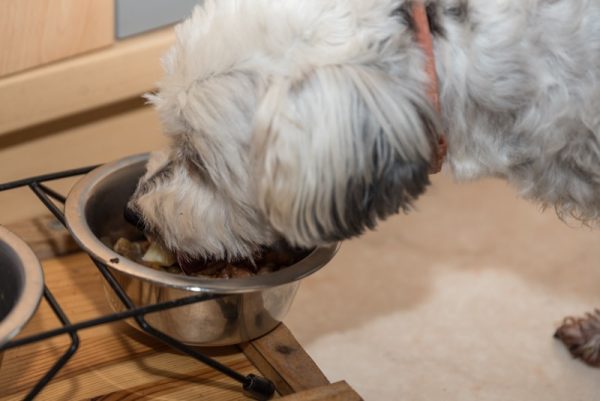In this article
The Shiba Inu is the most well-known of the six dog breeds in Japan that have been recognized as national treasures. But are Shibas good choices for allergy sufferers? Are they hypoallergenic?
Shina Inus are typically not considered hypoallergenic. They have a thick double coat and shed quite a bit, and twice a year during heavy shedding seasons, when they “blow” their coat, the inside of your home can look like it’s snowing!
If you’re thinking about getting a Shiba Inu or are just curious about hypoallergenic dogs, read on to learn the truth about this endearing breed.

Dog Allergy Overview
66% of US households (86.9 million) own a pet as of 2023.1 However, many people are allergic to animals, especially those who also have asthma or other allergies.
You are not sensitive to a dog’s fur when you have a pet allergy. In fact, proteins found in the animal’s dander (dead skin cells), saliva, and urine are the reason for your problem, and the dander is gathered by the fur. It may also carry additional allergens, such as pollen, mold, and dust mites. Allergy symptoms may occur when those proteins enter your mouth, nose, eyes, or skin.

What Are the Symptoms of Dog Allergies?
Dog allergy symptoms are typically similar to those of any other nasal allergy.
- Red, itchy eyes
- Coughing and wheezing
- Sneezing
- Itchy, runny, stuffy nose
Skin reactions can also occur in some dog allergy sufferers. For example, when a pup licks them, their skin might break out at the exposed area. Hives may appear on the face or chest in those with more severe allergies.
How Soon Do Symptoms Appear After Being Around a Dog?
This largely depends on to what extent you are allergic to a dog. If you have severe allergies, symptoms could occur 15 to 30 minutes after encountering them. If the condition is mild, symptoms will appear more slowly, possibly hours to even a day after exposure.

How Do You Know If You Are Allergic to Dogs?
A visit to an allergist will be helpful if you get allergic reactions after being around dogs, cats, or other animals. They will help you make an accurate diagnosis, possibly combining some specific tests such as a skin-prick test. They ask questions before performing allergy tests, such as:
- What symptoms do you have?
- Does your family have a history of allergies to pets?
- Have you been diagnosed with allergies before?
- What kind of animal was around you when your allergies started showing up?

Are There Hypoallergenic Dogs?
Some breeds may be easier for those with pet allergies to tolerate than others. People may believe those breeds are “hypoallergenic,” but in reality, there is no such thing as a truly hypoallergenic dog. All canines can cause allergy symptoms. Therefore, you should consider spending time with a specific dog breed before bringing one home if you think you may be allergic.
Managing Dog Allergies
If you have a dog in the house, you may be able to minimize allergy symptoms in various ways. First, avoid choosing breeds that are suspected of causing intense allergic reactions. The common characteristics of these canines are frequent drooling and heavy shedding. Second, consult with your doctor for advice, there are medications available to help manage your allergic symptoms. Some other ways that are also quite effective include:
| Clean well: |
Dog dander has a way of getting everywhere. Therefore, you must frequently mop and sweep the floors, vacuum the rugs, and clean the furniture. You should get a vacuum with a HEPA filter if at all possible. Regular vacuum filters only send the allergens back into the air since they can’t catch them.
|
| Filter the air: |
Every room in your home, including dog-free areas, can become contaminated with dog dander because of central heating and air conditioning. Filters on the vents themselves and a central air cleaner can be helpful.
|
| Make it easy to clean your house: |
Remove the curtains and rugs, and even carpets if needed. Your allergy symptoms may be lessened by lowering the number of items that can collect dust and dander.
|
| Don’t allow the dog to enter your bedroom: |
The bedroom is where you spend a third of your day, so make sure the room is free of dog fur. Although it won’t totally keep the allergens out, a closed door and keeping it a “dog-free” zone will help.
|
| Dog-free zones: |
Make other sections of the house dog-free in addition to the bedroom to protect yourself, such as the living room. You can also consider letting the dog spend as much time outside as possible.
|

What Dogs Are Worst for Allergies?
What Dogs Are Best for Allergies?

In Conclusion
Shiba Inus make adorable pets, but sadly, they are not hypoallergenic canines. However, not all people with allergies will react the same way to every kind of dog. Spending time with the pet is the only way to determine your allergic reaction to a Shiba. And if you discover that a Shiba does make your allergies worse, you might want to think about another breed.
Don’t give up on your desire to get a cute pup, though! Instead, do some research and identify the dog breed that would be the best fit for you.
Featured Image Credit: Akbudak Rimma, Shutterstock


















